Near-complete 50,000-year-old kangaroo skeleton retrieved from underground cave

“There’s not much a palaeontologist wouldn’t do for a specimen as incredible as this,” Tim Ziegler declares.
The ‘incredible’ specimen Tim is referring to is the fossil of an extinct short-faced kangaroo from the Pleistocene (Ice Age) epoch.
And he’s not wrong when he says there isn’t much a palaeontologist like himself wouldn’t do to get their hands on something like this.
It was Tim who recently led a team deep underground to retrieve the fossil skeleton from a cave system on Gunaikurnai Country near Buchan in East Gippsland, Victoria.
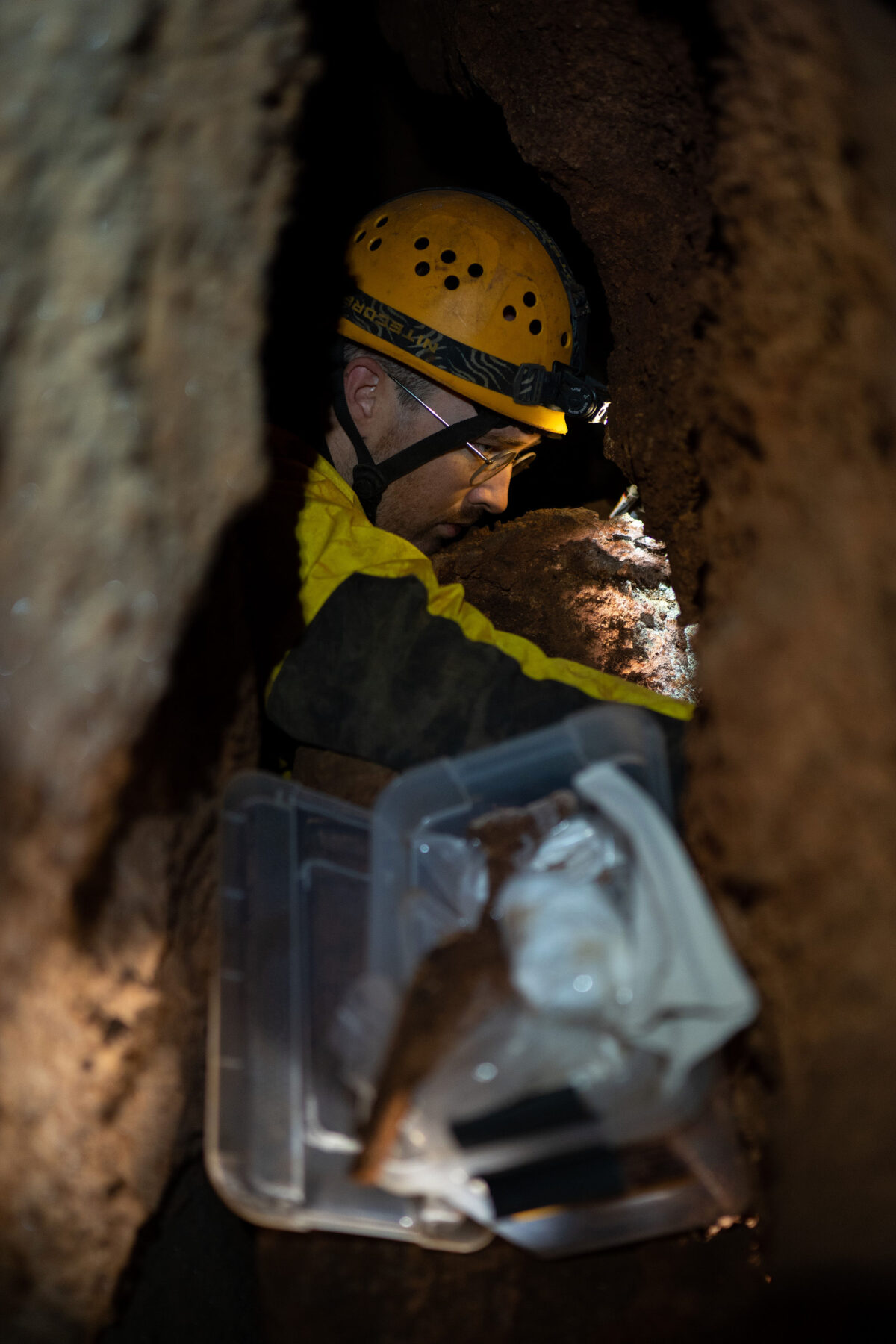
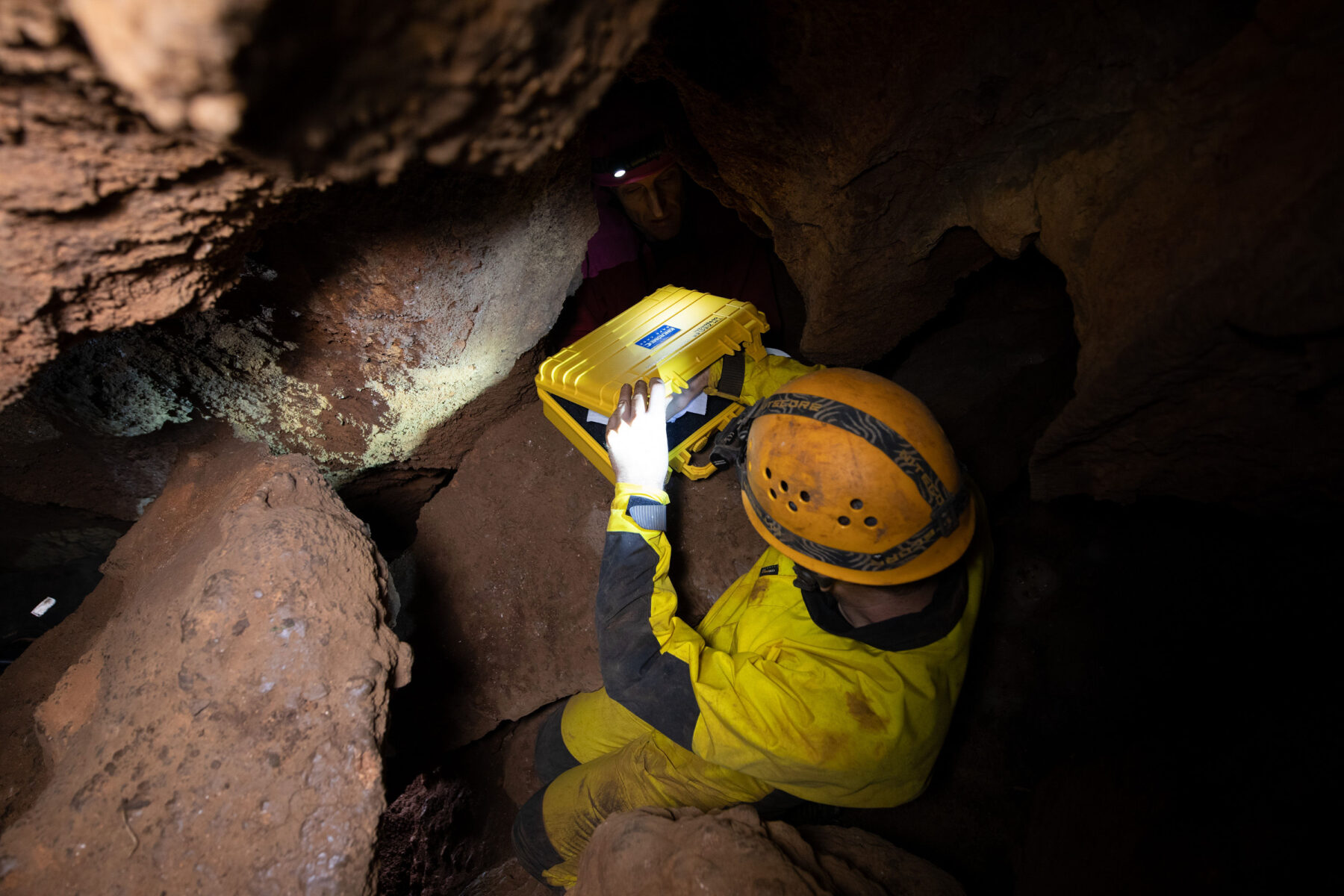

In total, the team – including Tim’s Museums Victoria Research Institute colleagues, other palaeontologists and scientists, Parks Victoria rangers and recreational cavers – spent a total of 58 hours underground (over a two-year period) to painstakingly bring the precious specimen safely to the surface.
Rigged up with harnesses and other safety equipment, the team entered the cave by “squeezing down through a hole about the width of my shoulders across,” Tim explains.
From there, things only get trickier.
“We then abseiled for 8m through a constricted passage to reach the bottom.
“Then we went through a u-bend on our bellies to corkscrew into the cave proper.”
From that point it was another 20m to the site where the specimen lay – on a protected ledge within a vertical shaft. All up, just getting to the fossil took a full hour each time.
Then, the work began to cautiously extract each bone, piece by piece.
At one stage Tim even took the shirt off his own back to wrap the precious skull bones in to ensure they made it – unharmed – to the surface.
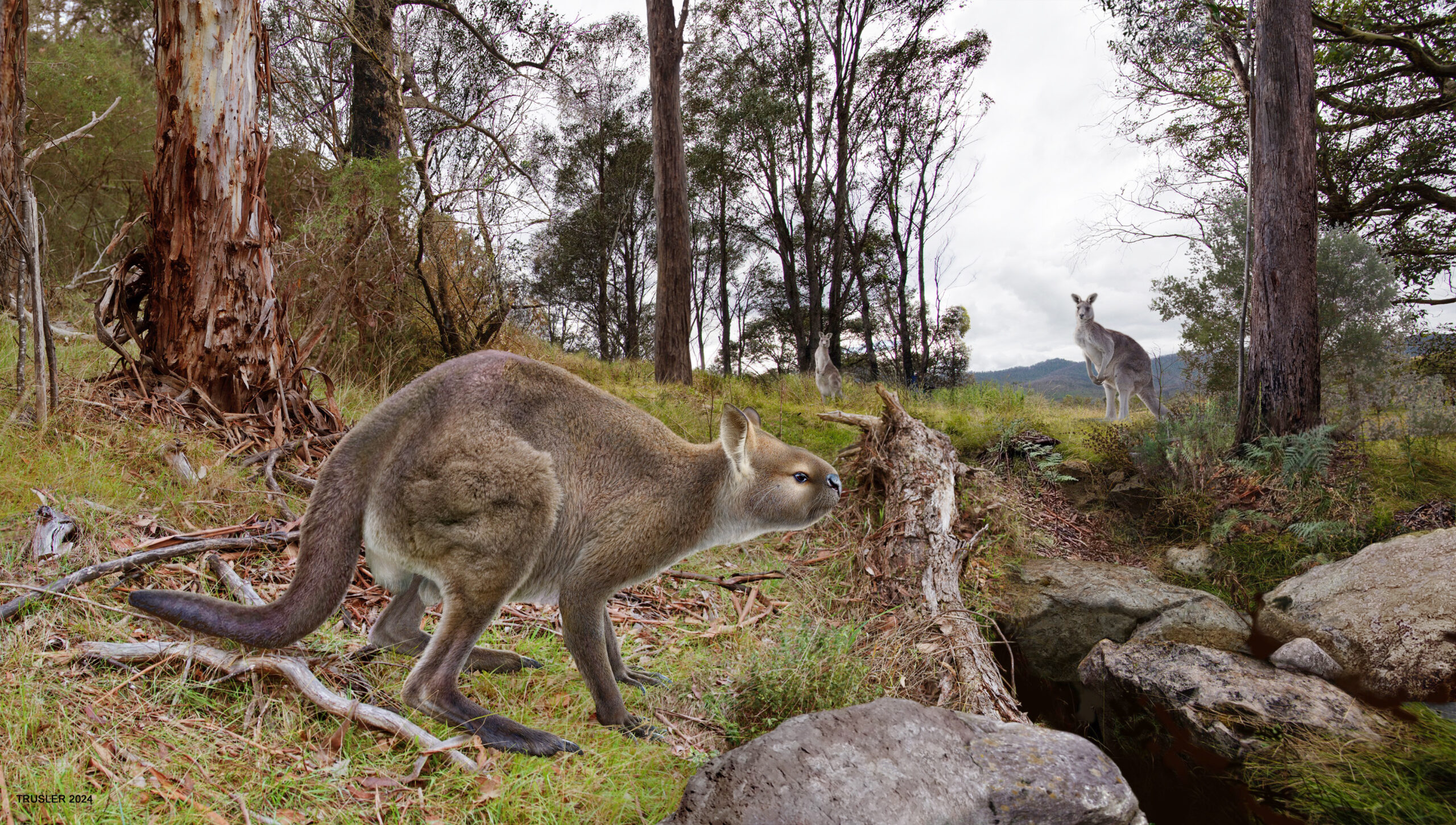
‘Extremely rare’
So, why is this specimen so special?
The near-complete skeleton is one of the most complete fossils ever found in Australia, and the most complete fossil skeleton ever discovered in a Victorian cave.
The exceptionally well preserved 150 bones, amounting to 71 per cent of the original skeleton, include a near-complete skull. They belong to an extinct short-faced kangaroo (Simosthenurus occidentalis).
Radiocarbon dating of closely-associated sediment indicates the skeleton is at least 49,400 years old.
‘Fossils of this quality and completeness are extremely rare in Australia. This skeleton has lain in a pitch-black cave for 50,000 years!” adds Tim.
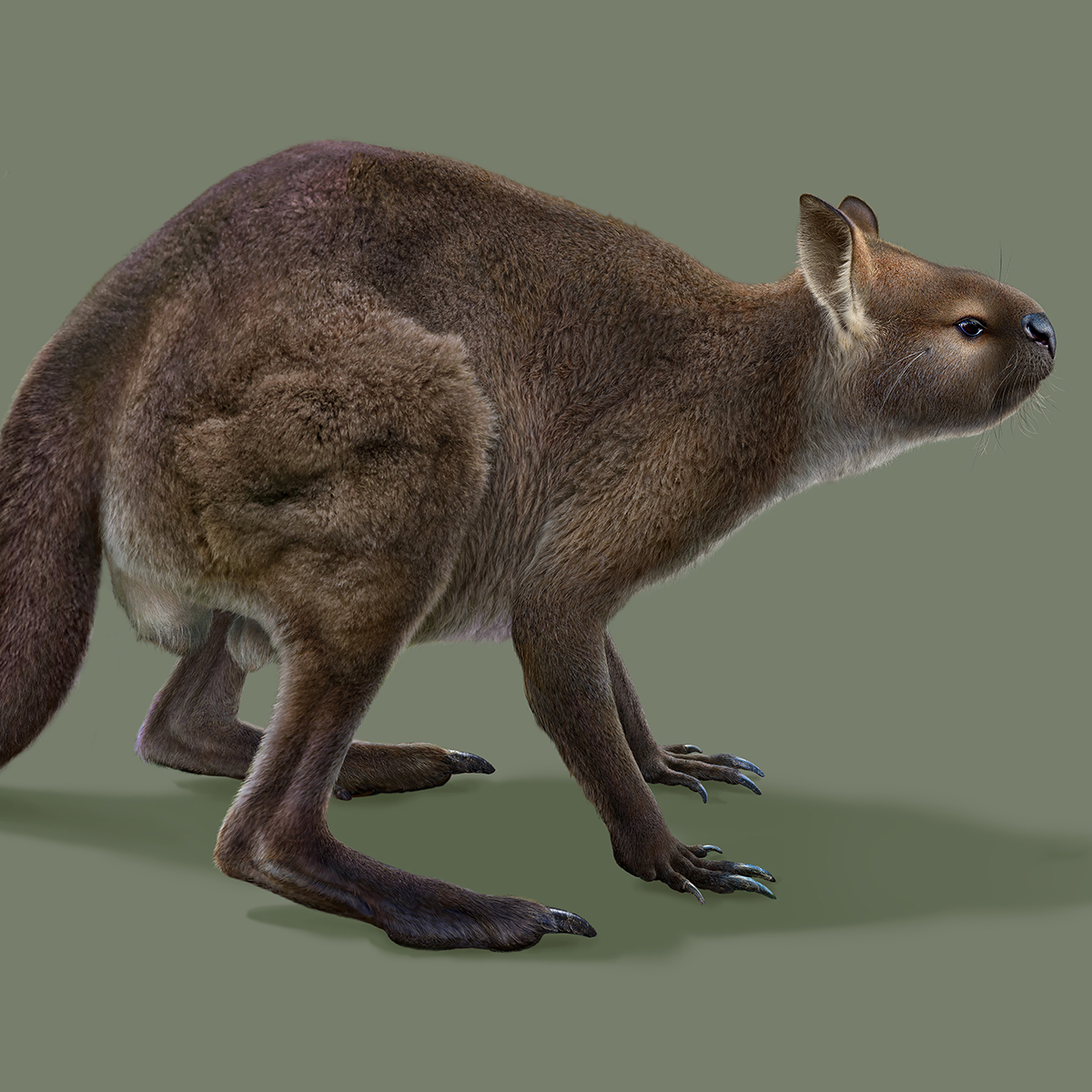
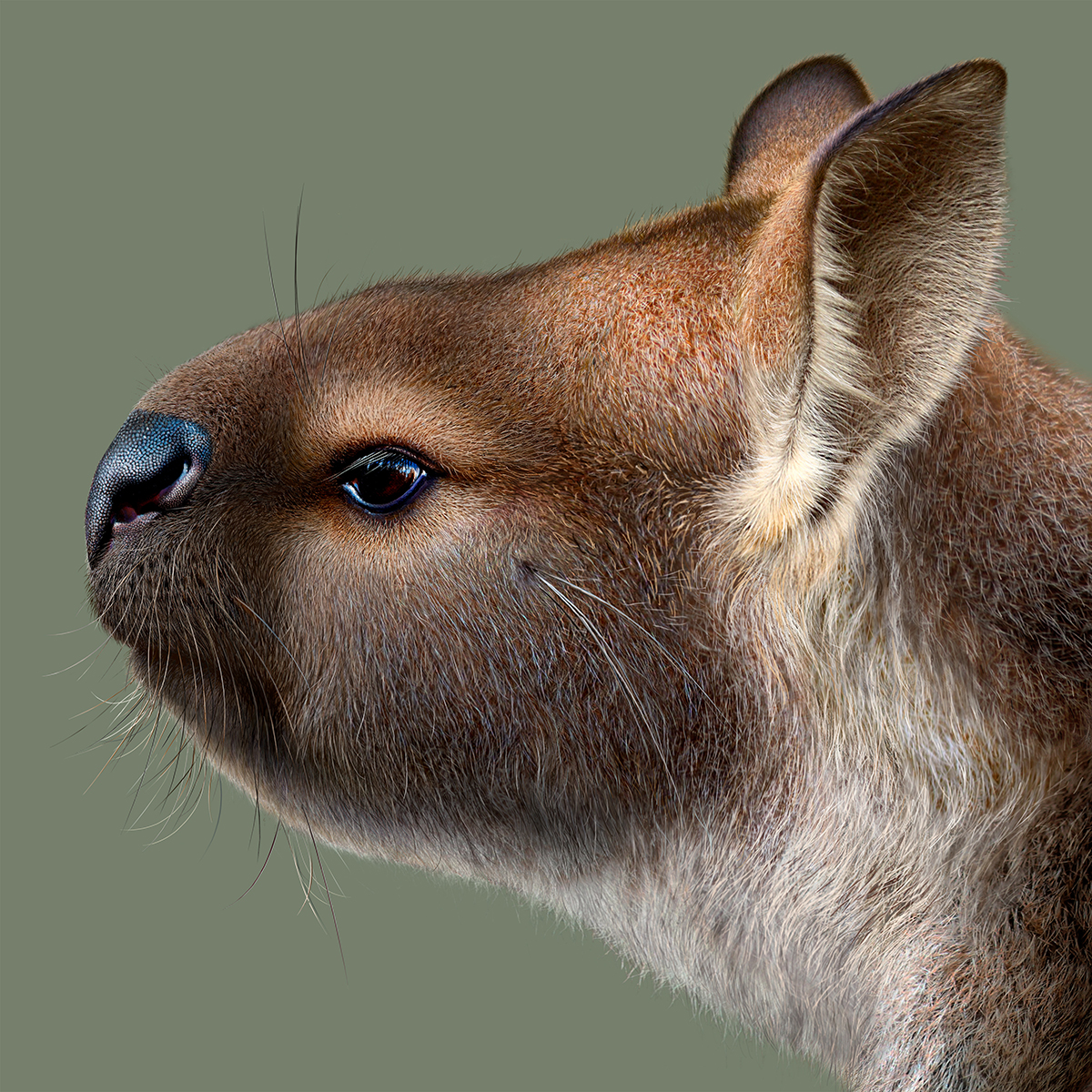
Discovery
The fossil was first sighted in 2011 by local recreational cavers. “They were the ones who first laid eyes on its skull,” explains Tim.
“When I first visited the cave 10 years later I saw what looked like a whole skeleton with its bones in life position even after tens of thousands of years.”

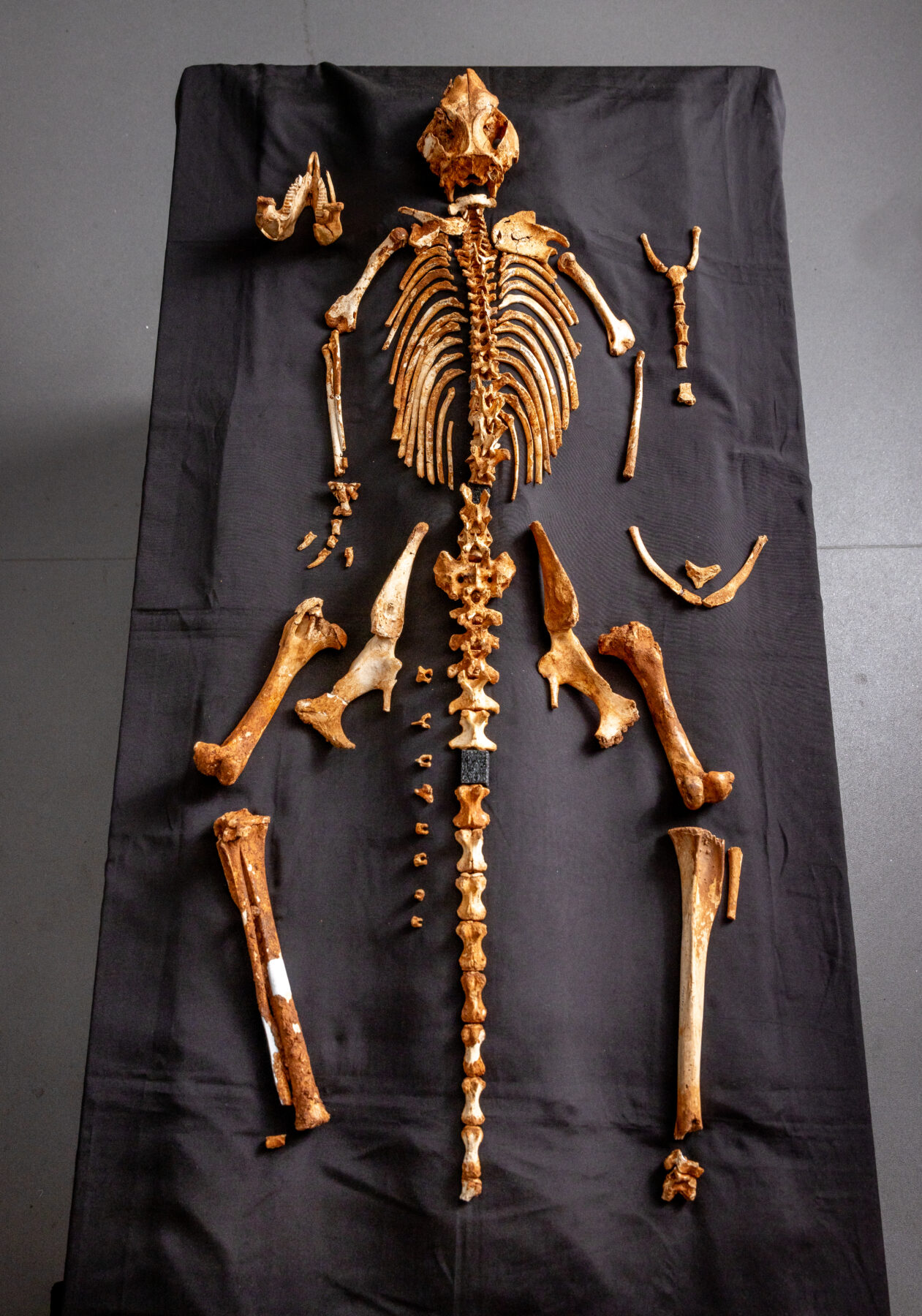
On a return visit over a decade later, Tim saw the condition of the fossil had begun to degrade, so hastily began planning a way to retrieve and conserve it.
“It’s been a privilege to bring it back to the light,” he says.
The fossil will be on public display at Melbourne Museum from June 24

